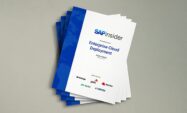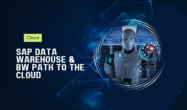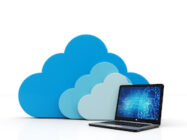SAP Platform and Technology
SAP Business Technology Platform | SAP Cloud Connector | SAP Cloud Integration Platform | SAP Cloud Migration | SAP Cloud Platform | SAP Cloud Providers | SAP Cloud Strategy | SAP Container Platform | SAP Digital Asset Management | SAP Digital Integration Hub | SAP Digital Signature | SAP HANA Enterprise Cloud | SAP HEC | SAP Hyperscalers | SAP Infrastructure | SAP Messaging | SAP Smart Forms
Filter By
Browse By
- SAP Analytics and AI
- SAP Application Development and Integration
- All SAP Application Development and Integration
- SAP ABAP
- SAP ABAP Development Tools
- SAP ABAP Test Cockpit
- SAP API Management
- SAP BAPI
- SAP Basis
- SAP BRF
- SAP Business Application Studio
- SAP CMS
- SAP Design Studio
- SAP Development Tools
- SAP DevOps
- SAP EAI
- SAP EDI
- SAP Extension Suite
- SAP Fiori
- SAP Fiori Elements
- SAP Integration Suite
- SAP Low Code Application Development
- SAP Low Code Automation
- SAP Netweaver
- SAP Release Management
- SAP UI5
- SAP Web Application Server
- SAP Web IDE
- SAP Business Process Management
- SAP Center of Excellence
- SAP CIO
- SAP Customer Experience
- SAP Data and Data Management
- All SAP Data and Data Management
- SAP BW
- SAP BW/4HANA
- SAP Crystal Reporting
- SAP Data Archiving
- SAP Data Center
- SAP Data Governance
- SAP Data Integration
- SAP Data Migration
- SAP Data Quality
- SAP Data Services
- SAP Data Strategy
- SAP Data Visualization
- SAP Data Warehouse Cloud
- SAP DMS
- SAP Document Control
- SAP EIM
- SAP ETL
- SAP ETL Tools
- SAP HANA
- SAP HANA Administration
- SAP HANA Deployment Infrastructure
- SAP HANA Studio
- SAP Master Data
- SAP Master Data Governance
- SAP MDM
- SAP Enterprise Architect
- SAP Enterprise Asset Management
- SAP ERP
- SAP Finance
- All SAP Finance
- SAP Accounting
- SAP AR AP
- SAP Asset Accounting
- SAP Billing Systems
- SAP BPC
- SAP BRIM
- SAP Cash Management
- SAP Central Finance
- SAP Controlling
- SAP COPA
- SAP Cost Center Accounting
- SAP e-invoicing
- SAP FICO
- SAP Finance Automation
- SAP Financial Closing Cockpit
- SAP Financial Consolidation
- SAP Financial Planning
- SAP FX Risk
- SAP General Ledger
- SAP Global Tax Management
- SAP Hyperion
- SAP Order to Cash
- SAP Payment Processing
- SAP Profitability Analysis
- SAP Rebate Management
- SAP S/4HANA Finance
- SAP Universal Journal
- SAP Governance Risk and Compliance
- SAP Human Capital Management
- SAP Intelligent Technologies
- SAP Platform and Technology
- All SAP Platform and Technology
- SAP Business Technology Platform
- SAP Cloud Connector
- SAP Cloud Integration Platform
- SAP Cloud Migration
- SAP Cloud Platform
- SAP Cloud Providers
- SAP Cloud Strategy
- SAP Container Platform
- SAP Digital Asset Management
- SAP Digital Integration Hub
- SAP Digital Signature
- SAP HANA Enterprise Cloud
- SAP HEC
- SAP Hyperscalers
- SAP Infrastructure
- SAP Messaging
- SAP Smart Forms
- SAP Quality and Testing
- SAP Security
- SAP Spend Management
- SAP Supply Chain Management
- All SAP Supply Chain Management
- SAP APO
- SAP Asset Management
- SAP Business Network
- SAP Digital Manufacturing Cloud
- SAP Digital Twin
- SAP EWM
- SAP IBP
- SAP Inventory Management
- SAP Label Printing
- SAP Logistics
- SAP Manufacturing
- SAP Manufacturing Automation
- SAP MES
- SAP MII
- SAP MM
- SAP MRO
- SAP MRP
- SAP Order Management
- SAP Plant Maintenance
- SAP PLM
- SAP Production Planning
- SAP S&OP
- SAP SD
- SAP SPM
- SAP Supply Chain Planning
- SAP Track and Trace
- SAP Transportation Management
- SAP System Administration
What is SAP Platform and Technology?
SAP Platform and Technology history started with mainframe-based applications, with the first official release being the SAP R/2 solution. This was eventually replaced by SAP R/3 which was the first application running a 3-tier client/server architecture. A client/server architecture continues to be the model for on-premise applications sold by SAP, even when those applications are often running on some form of cloud infrastructure. The newest SAP applications use a purely cloud-based infrastructure and are often software-as-a-service solutions.
What is SAP Platform and Technology?
SAP Platform and Technology history started with mainframe-based applications, with the first official release being the SAP R/2 solution. This was eventually replaced by SAP R/3 which was the first application running a 3-tier client/server architecture. A client/server architecture continues to be the model for on-premise applications sold by SAP, even when those applications are often running on some form of cloud infrastructure. The newest SAP applications use a purely cloud-based infrastructure and are often software-as-a-service solutions.
While these represented the infrastructure on which SAP solutions were built, SAP customers also needed platforms on which to build and develop applications. The first solution that SAP released was the SAP NetWeaver platform which was a software stack for many of SAP’s applications. First released in 2004, SAP NetWeaver consisted of an ABAP software stack as well as a Java development stack. This allowed organizations to build and deploy applications using business APIs and integration capabilities to other SAP solutions.
Building on the success of SAP NetWeaver, SAP released the SAP Cloud Platform as a similar resource for organizations looking to build cloud-based applications. More recently, SAP brought the SAP Cloud Platform together with other services and technologies to release the SAP Business Technology Platform (BTP). Key capabilities of SAP BTP include database and data management, analytics, application development and integration, and intelligent technologies like artificial intelligence and machine learning.
One of the most important capabilities of SAP solutions has been the ability to enhance them by creating customizations and extensions. Implementations of SAP ERP systems like SAP ECC frequently involved thousands or even hundreds of thousands of lines of customized code based on SAP ABAP and written using platforms like SAP NetWeaver. New solutions like SAP S/4HANA focus on extensions which provide additional functionality without requiring underlying code changes using SAP BTP as the means for achieving these extensions.
SAP BTP is also the technology solution that SAP organizations are looking to use to leverage to build on their investments in SAP S/4HANA.
From a technology and infrastructure perspective, nearly nine in ten SAP customers are now running at least some SAP workloads in the cloud. Underlying data repositories are also more likely to be moving to cloud-based infrastructure.
SAP has many implementation partners that will either provide a technology platform on which SAP solutions can run or will assist with the development of applications that leverage technologies like SAP BTP. Examples of partners providing infrastructure include Dell Technologies, HPE, and Intel. Cloud providers for SAP services include AWS, Google Cloud, and Microsoft. Implementation partners also assist organizations with building on this SAP Platform and Technology.
23 results
-

Why SAP Datasphere Matters
Reading time: 1 mins
SAP Datasphere, the next generation of the SAP Data Warehouse Cloud solution, solves a lot of the challenges people have with the volume and distribution across data. SAP Datasphere closely aligns existing components in the Business Technology Platform along with newly available data integration, data cataloging, and semantic modeling features.
-

- SAP Platform and Technology
 Premium
Premium
2023 Community Snapshot – Mastering SAP Technologies & Cloud, Data & Analytics, Security & Risk
Reading time: 1 mins
The booming and competitive landscape that technology leaders and practitioners find themselves in is evolving at pace. The headwinds of rising inflation, supply chain issues, and recessionary indicators are being felt around the globe. Businesses are responding by embracing technology that will help them innovate, achieve more with less, and empower their people to work…
-

SAPinsider Buyers Guide: ERP, Platform, and Technology
Reading time: 1 mins
Platforms are at the center of every organization. They start with the underlying infrastructure on which an organization’s systems and processes run. They in lude ERP systems that are the backbone of day-to-day activities. These are also augmented with services that connect them to other solutions and parts of the organization. Without platforms, organizations would…
-
-

- SAP Platform and Technology
 Premium
Premium
SAP Expands Partnership with Red Hat
Reading time: 4 mins
SAP and Red Hat announced an expanded partnership that will focus on increasing SAP’s use of and support for Red Hat Enterprise Linux. Mentioned in the announcement is that SAP is moving part of their internal IT landscape and their SAP Enterprise Cloud Services portfolio to Red Hat Enterprise Linux. Most notably for members of…
-

Enterprise Cloud Deployment 2022
November 28, 2022
While SAP workloads are moving to the cloud, older SAP workloads such as SAP ECC, SAP Business Suite, SAP Business Warehouse, and financial, procurement, and manufacturing solutions continue to run on-premise. Some workloads, such as SAP HANA, are more likely to be running in hybrid cloud environments, while travel and expense solutions, SAP BTP, and…
-

Enterprise Cloud Deployment 2022
Reading time: 1 mins
This report tracks how organizations are moving SAP workloads to the cloud, the reasons they are doing so, and how they are measuring success
-

Mastering SAP 2022 – A Partner’s Perspective
Reading time: 4 mins
From a partner’s perspective, Chris Rae has plenty of experience attending SAP-related conferences around the world.
-
-

SAP Data Warehouse & BW Path to the Cloud
Reading time: 6 mins
SAP Data Warehouse Cloud has been around now as part of the analytics & data portfolio at SAP for around 2 years. This content is for Basic Access, SAPinsider Monthly Subscription, SAPinsider Annual Subscription, and SAPinsider Premium Annual Subscription members only.Log In Join Now
-

Webinar On-Demand: Best Practices on Moving to SAP S/4HANA and a Hyperscaler or Public Cloud
April 13, 2022
No matter where you are in your IT modernization journey, an automation strategy at scale will improve existing processes so you can save time, accelerate innovation, improve employee satisfaction, and reduce costs throughout your organization. For SAP customers this is even more relevant as they move to SAP S/4HANA while also moving to Public Cloud…
-

Multi Cloud for SAP, Frictionless Landscape Borders
December 06, 2021
Companies are embracing the cloud to deliver their next-gen SAP solution, but 65% of ERP data still remains on-premise. Complexity, risks and time to plan and move landscapes to the cloud are key drivers in the reluctance of moving completely into the cloud. In order to realize the benefits of seamless integration and cost savings…
Featured Insiders
-

Thomas Neudenberger
COO, realtime North America
-

Nick Parkin
Founder & CEO, Proceed Group
-

Suraj Gauli
PWC
Become a Member
Unlimited access to thousands of resources for SAP-specific expertise that can only be found here.
Upcoming Events
-

Register Now: SAPinsider Technovation Summit Barcelona: AI + SAP BTP
May 14 - 15, 2024
Barcelona, Spain
View Event
Related Vendors
Your request has been successfully sent

